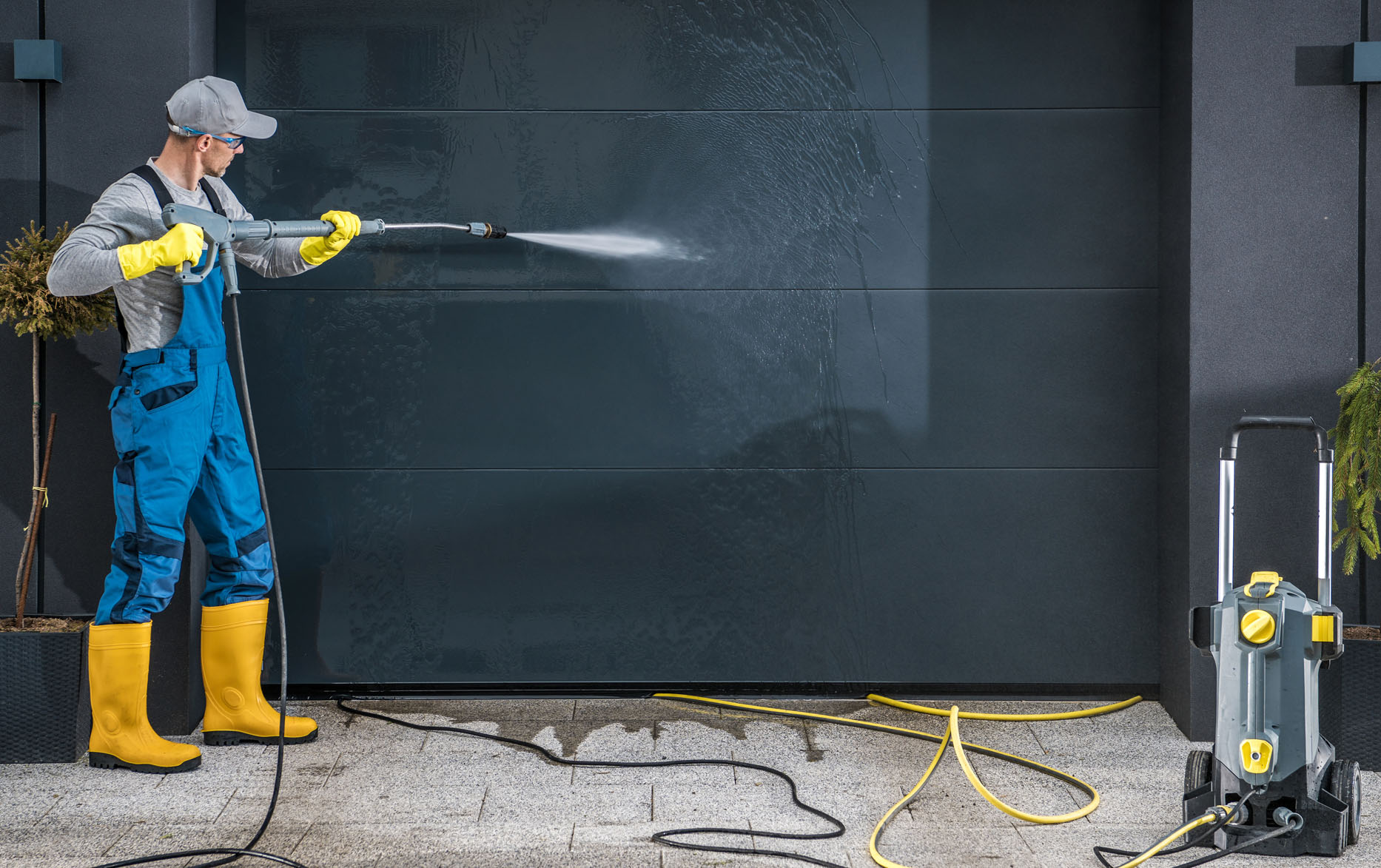
If you’ve ever seen a video of power washing, you know just how satisfying it is to watch grime peel away from siding, patios, and driveways like magic. But as a homeowner, that leads to a practical question: How often should you power wash your home? Once a year? Twice? Only when it looks dirty?
The answer isn’t the same for everyone — but there is a smart way to find the right frequency for your home.
This guide will walk you through how often you should power wash, why timing matters, and what factors impact the cleanliness and longevity of your home’s exterior. 🏡💦
🧼 What Does Power Washing Actually Do?
Let’s start with the basics. Power washing (also called pressure washing) is a cleaning method that uses a high-pressure stream of water — sometimes combined with detergents — to remove:
- Dirt and grime
- Mold and mildew
- Algae and moss
- Pollen and allergens
- Grease, oil, and other stains
It’s commonly used on:
- Siding
- Driveways and sidewalks
- Fences
- Decks and patios
- Roofs (soft washing only)
- Gutters and downspouts
💡 A good power wash isn’t just for appearance — it also helps prevent long-term damage and health hazards.
📅 How Often Should You Power Wash Your House?
The general rule of thumb for most homes is:
✅ Once per year
That said, not all homes are built or located the same. You might need more frequent cleanings depending on:
🌦️ 1. Your Climate
- Humid, rainy regions: More mildew, algae, and moss → may need 2x/year
- Dry, dusty areas: Dirt and sand buildup → yearly is usually fine
- Snow-prone zones: Spring cleaning helps remove salt and grime from winter
🌲 2. Surrounding Environment
- Trees overhanging your roof? Expect sap, leaves, and shade-related mildew
- Near a busy road? You’ll get more soot and air pollution on your siding
- Live near water? Expect faster mold growth and salt deposits
📍 Homes in wooded, coastal, or urban areas tend to need more frequent power washing.
🏠 3. Your Home’s Materials
- Vinyl siding: Holds up well with yearly washing
- Wood siding or painted surfaces: May need gentler, less frequent washing
- Stucco: Should be cleaned less aggressively and only when buildup is visible
- Brick: Tough but can lose mortar over time with too much pressure
🧽 Surface-by-Surface Recommendations
To help you build a full exterior cleaning routine, here’s how often various parts of your home should be power washed:
| Surface | Recommended Frequency |
|---|---|
| House siding | Once a year |
| Driveways and sidewalks | 1–2 times a year |
| Decks and patios | Every 1–2 years |
| Fences | Every 1–2 years |
| Roof (soft wash only) | Every 2–3 years |
| Gutters | Twice a year (spring/fall) |
🔁 These intervals help keep your home clean while avoiding unnecessary wear and tear.
🧠 Why More Isn’t Always Better
You might think washing your home more often will keep it extra clean — and that’s true. But there’s a risk in overdoing it:
- Too much pressure can damage siding, wood, or mortar
- Frequent washing can strip away paint prematurely
- Wasting water and cleaning agents isn’t eco-friendly
- Time and money add up if it’s not necessary
That’s why knowing your home’s specific needs is more important than sticking to a rigid schedule.
🧪 Signs It’s Time for a Cleaning (Even If It’s Early)
Regardless of the calendar, keep an eye out for these telltale signs that your home needs a power wash:
- Green or black streaks on siding
- Slimy or slippery walkways
- Faded or stained fencing
- Overflowing or stained gutters
- Dark patches on roof shingles
- Unusual allergy symptoms indoors (could be mold spores outside)
👀 Your house will tell you when it needs a bath — if you’re paying attention.
🌱 Eco-Friendly Considerations
Worried about water waste or chemical runoff? Many professional power washing services offer:
- Low-pressure “soft washing” with biodegradable detergents
- Water recovery systems to prevent drain pollution
- Plant-safe soaps for landscaping protection
♻️ Doing it right protects both your home and your environment.
🛠️ DIY vs. Professional Cleaning
DIY Pros:
- Save money
- Immediate results
- Great for small tasks like patio furniture or driveways
DIY Cons:
- Risk of damage without training
- Inconsistent results
- Time-consuming if you’re learning on the job
Browse Amazon Here For DIY Power Washers
Hire a Pro If:
- You’re washing two-story or hard-to-reach areas
- You have delicate surfaces (like stucco or painted wood)
- You want to bundle services (like gutter cleaning + siding)
💡 A professional may also offer a multi-year cleaning plan — and discounts for recurring service.
📌 Final Takeaway: Make Power Washing Part of Your Annual Routine
Think of power washing like visiting the dentist for your house. You may not want to do it, but if you skip it long enough, the damage adds up.
✅ A once-a-year power wash can:
- Increase your home’s value
- Prevent mold and algae damage
- Extend the life of your siding, paint, and finishes
- Boost curb appeal
- Create a healthier outdoor environment for your family
So yes — power washing your house every year is a smart move. But don’t just mark the calendar and forget it. Keep an eye on your environment, your materials, and your home’s condition to find the perfect frequency that keeps everything looking its best. 🧼💪



